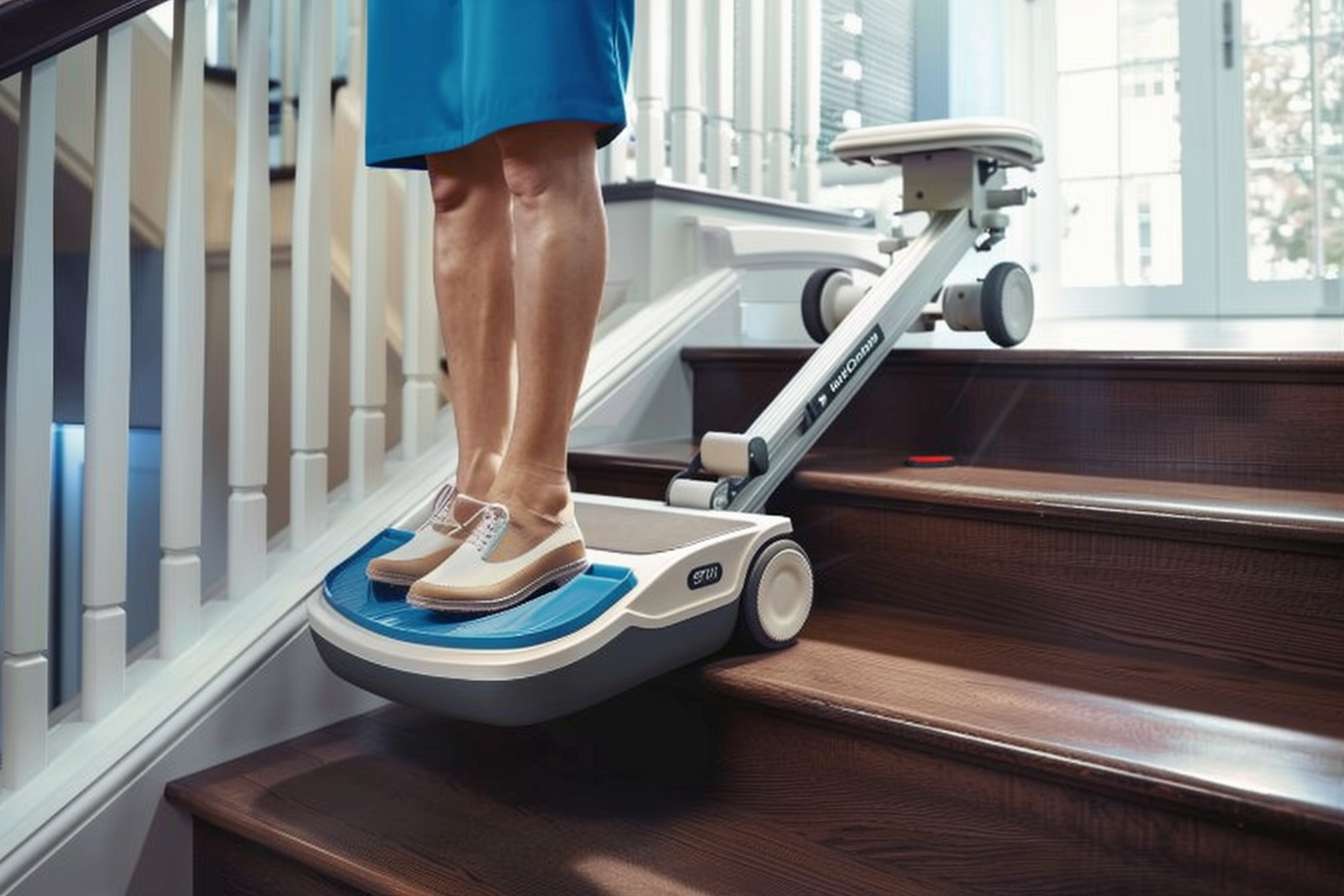Portable Stairlifts UK 2025 No Installation: Safe, Affordable Mobility Solutions
Portable stairlifts designed for the UK market offer no-permanent-installation solutions that are lightweight, transportable, and suitable for temporary or transitional use. This article explains how these devices work, which UK safety standards and features to check, common types and mounting options, rental and purchase cost considerations, ideal use cases for caregivers and homeowners, and practical tips for safe selection, transport, setup, and maintenance.

For many people across the UK, stairs present a daily obstacle that can limit independence and access within their own homes. While traditional stairlifts require professional installation and permanent fixtures, portable stairlifts have emerged as a flexible alternative. These mobility aids cater to those seeking temporary solutions, rental options, or adaptable equipment that can move between locations. Understanding the features, safety standards, and practical considerations surrounding portable stairlifts helps individuals make informed decisions about their mobility needs.
What Are Portable Stairlifts Without Installation?
Portable stairlifts are mobility devices designed to assist individuals in ascending and descending stairs without the need for permanent installation or structural modifications. Unlike conventional stairlifts that attach to walls or banisters with rails and mounting brackets, portable models typically feature self-contained designs. These devices often use battery power and can be positioned at staircases as needed, then stored or relocated when not in use.
Some portable stairlifts resemble tracked chairs that climb stairs independently, while others function as assisted climbing devices with support handles and motorized mechanisms. The key advantage lies in their flexibility—they suit temporary living situations, rental properties, or homes where permanent modifications are impractical or undesired. Many models fold for storage and transport, making them suitable for use in multiple locations or when travelling.
Safety Standards and Features Ensuring Reliable Use
Safety remains paramount when selecting any mobility device. Portable stairlifts available in the UK must comply with relevant British and European safety standards, including regulations governing medical devices and mobility equipment. Reputable manufacturers design their products with features such as anti-slip surfaces, secure harness systems, emergency stop functions, and stability mechanisms to prevent tipping.
Battery-powered models typically include low-battery indicators and automatic braking systems that engage if power fails. Weight capacity ratings vary by model, generally ranging from 100kg to 160kg, and users should verify that their chosen device accommodates their needs. Regular maintenance checks, even for portable units, help ensure continued safe operation. Users should also assess staircase dimensions and configurations, as not all portable stairlifts suit every type of staircase—particularly spiral or very narrow stairs may present challenges.
Types of Portable Stairlifts Common in the UK
Several categories of portable stairlifts are available to UK consumers, each with distinct characteristics. Portable tracked stairlifts feature a compact track system that attaches temporarily to stairs, allowing a motorized chair to ascend and descend. These offer greater stability than fully freestanding options but still avoid permanent installation.
Stair climbing wheelchairs represent another category, designed with tank-like treads or rotating wheel systems that navigate stairs while the user remains seated. These devices often require an assistant to operate and are popular in healthcare settings. Standing stair climbers provide support handles and a platform for users who can bear weight on their legs but need assistance with balance and propulsion.
Battery-powered stair climbing dollies, while primarily designed for transporting goods, have been adapted for personal mobility use in some cases, though these are less common for regular domestic use. Each type offers different levels of independence, support, and suitability depending on individual mobility levels and staircase configurations.
Affordability and Cost Considerations
Cost represents a significant factor when considering portable stairlifts. Prices vary considerably based on device type, features, and whether the unit is purchased new, refurbished, or rented. Understanding the financial landscape helps individuals budget appropriately and explore available options.
| Product Type | Provider Examples | Cost Estimation |
|---|---|---|
| Portable Tracked Stairlift | Handicare, Stannah | £2,500 - £4,500 (purchase) |
| Stair Climbing Wheelchair | TopChair, Alber Scalamobil | £3,000 - £7,000 (purchase) |
| Rental Options (Monthly) | Local mobility suppliers | £150 - £350 per month |
| Refurbished Units | Various independent dealers | £1,500 - £3,000 |
Prices, rates, or cost estimates mentioned in this article are based on the latest available information but may change over time. Independent research is advised before making financial decisions.
Purchasing a portable stairlift outright typically involves an initial investment ranging from £1,500 to £7,000 depending on sophistication and brand. Rental arrangements offer lower upfront costs, making them attractive for short-term needs such as post-surgery recovery or temporary accommodation. Some mobility equipment charities and local authorities provide grant assistance or subsidized equipment for eligible individuals, so exploring these avenues may reduce financial burden.
Maintenance costs for portable units are generally lower than permanent installations, as fewer mechanical components require servicing. However, battery replacements and occasional repairs should be factored into long-term budgeting. Comparing multiple suppliers and seeking demonstrations before committing helps ensure value for money.
Ideal Use Cases for Portable Stairlifts
Portable stairlifts serve numerous practical scenarios where permanent installations prove unsuitable. Individuals recovering from surgery or injury who face temporary mobility limitations benefit from short-term rental solutions that provide safe stair access during rehabilitation. Elderly people visiting family members can bring portable devices to navigate unfamiliar staircases, maintaining independence while away from home.
Rental properties present another common use case, as tenants cannot typically authorize permanent structural modifications. Portable stairlifts allow renters to address mobility needs without violating tenancy agreements or forfeiting security deposits. Similarly, homeowners uncertain about long-term mobility requirements may prefer portable options before committing to permanent installations.
Carers and healthcare professionals utilize portable stair climbing equipment to assist patients in various settings, including home visits and residential care facilities. The ability to transport devices between locations maximizes utility and cost-effectiveness for organizations serving multiple clients. Holiday accommodations and temporary housing situations also benefit from the flexibility portable stairlifts provide.
Choosing the Right Solution for Your Needs
Selecting an appropriate portable stairlift requires careful assessment of individual circumstances. Key considerations include the user’s weight, mobility level, cognitive ability to operate controls, and whether assistance will be available during use. Staircase characteristics such as width, length, angle, and presence of landings or turns significantly influence device compatibility.
Trialing equipment before purchase or rental proves invaluable, as comfort and confidence vary between models. Many suppliers offer demonstration services or trial periods allowing users to test devices in their actual home environment. Consulting with occupational therapists or mobility specialists provides professional guidance tailored to specific needs and ensures optimal safety.
Budget constraints naturally influence decisions, but prioritizing safety features and reliability over cost alone prevents potential accidents and dissatisfaction. Reading reviews from other users and verifying supplier credentials helps identify reputable providers offering quality products and responsive customer support. Warranty coverage and after-sales service should factor into final decisions, particularly for purchased units requiring long-term reliability.
Portable stairlifts represent a valuable mobility solution for many UK residents facing stair access challenges. By understanding available types, safety features, costs, and appropriate applications, individuals can make informed choices that enhance independence while maintaining safety and practicality within their homes and beyond.



